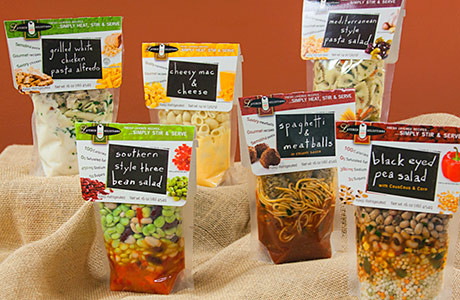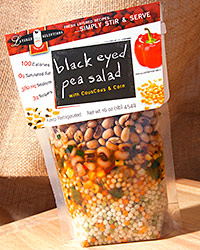Transparent packaging for ready meals must set up and realise consumer expectations or risk failure, according to customer insight agency Engage Research.

A new range of ready meal products, which clearly shows the ingredients layered in transparent pouches, may well be tapping into our increasing interest into what goes into the food we eat. But beyond the ability to deliver such products, greater research might be needed to see whether transparency turns us on or off of such open product packaging.
Sandridge Food, an American fresh foods manufacturer which promises to provide “unrivalled fresh food – reliable, great tasting, handmade quality that enhances our customers’ reputation”, has launched ‘Layered Selections’, a range of fresh soups and salads where consumers can clearly see the different ingredients lined up in the transparent pouches.
Allaying ready meal fears
“This is potentially a very interesting development in that it could be successful in trying to allay the much publicised fears over the past year or two about what ready meals may be hiding,” explains Engage Research director, Lyndsay Peck.
“Certainly, with transparent packaging you can convey the impression that the ingredients are of a better quality as there is nowhere to hide gristly offcuts or less than perfect vegetables.”
But, adds Peck, there is a risk that it can be quite polarising as the product is neither an easy ‘put in the oven dinner’ nor a dinner that you have selected the ingredients for yourself.
“People can be a little cautious about having ingredients jumbled up together especially as there is no hiding place. If the meatballs look ‘grey’, you can’t disguise that.”
Testing attitudes
For the concept to be introduced in the UK, Peck would recommend research to test consumer attitudes rather than simply introducing it because packaging technology allows it.
“Research as for any food product needs to be as close to real life as possible. Manufacturers need to understand what people think of the idea and how they would react to the product itself in order to maximise the chances of success in market. So, does the packaging appeal to people and set up the right sort of expectations; does the product deliver against the expectations it sets up, and are there any hesitations that can be addressed prior to launch?”

Researching how people prepare ready meals
She adds that research could also help marketers understand how people get on preparing the dish and whether they understand and indeed follow the instructions. If it requires consumers to do something a bit out of the usual, people can make mistakes or assume they know what to do and therefore do it wrong.
Test approach
“We would propose starting with a standard concept test to evaluate the size of the market. This would also help understand who the target is, for example mums for kids’ dinners or adults everyday. Then you would move on to do a concept or product test to be certain that the recipes themselves really deliver – which would be crucial for a range like this. Portion size can, for example, be exceptionally important for these kinds of meals.
You could also do a sales volume estimation as part of this process,” she said.












